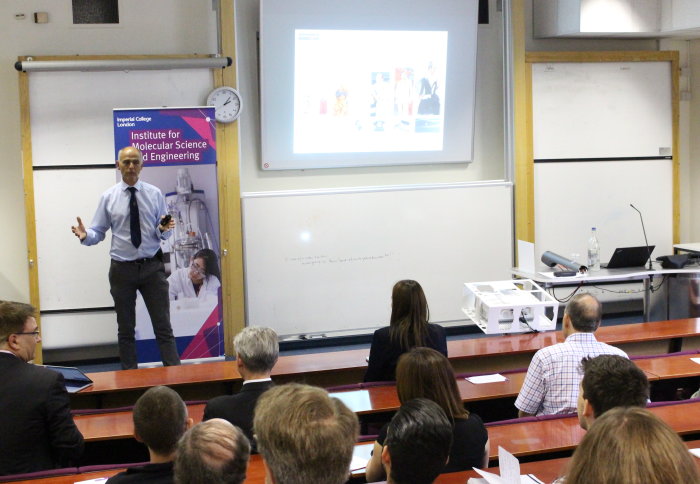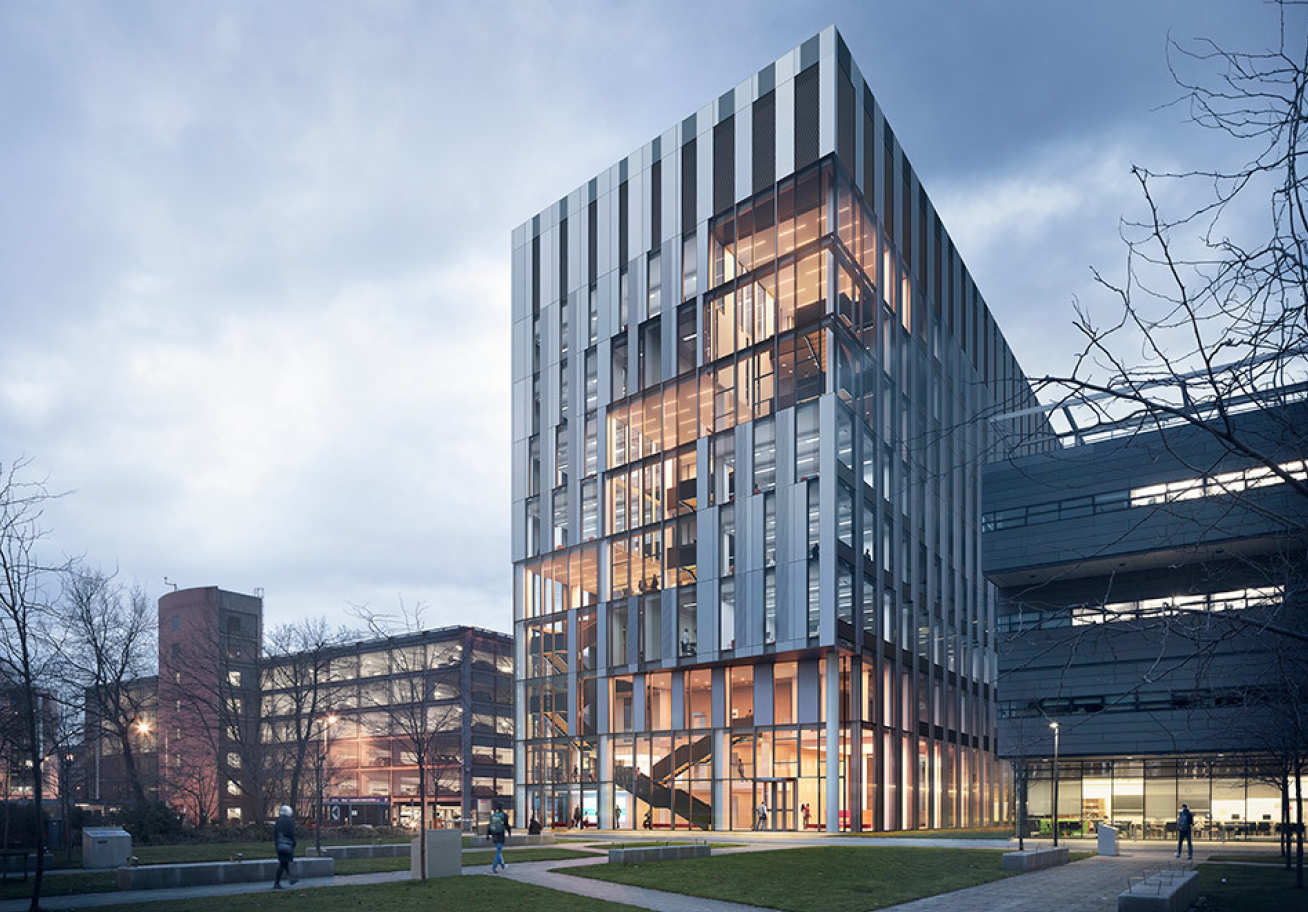

Professor Philip Withers delivered the penultimate Institute for Molecular Science and Engineering (IMSE) Highlight Seminar of this academic year.
Professor Withers FRS, is the Regius Professor of Materials at the University of Manchester and the Chief Scientist of the Henry Royce Institute. As a world-leader in correlative tomography his work involves linking X-ray and electron imaging techniques – over a range of length (nanometre to metre) and timescales – for materials characterisation purposes.
Materials matter
The capability of humankind is determined by the types of material we have to hand. If we want to advance, it’s imperative that we continue producing new materials. Professor Philip Withers University of Manchester
Professor Withers began his talk by emphasising the importance of materials to the advancement of society. New materials, as much as new ideas, have been fundamental to achieving humankind’s development of materials – think, for instance, of the Stone, Bronze, Iron (and now Carbon) ages.
Furthermore, some of the biggest ongoing research challenges – such as building better batteries and greener plastics – directly require the development of new, functional materials.
To meet ambitious goals such as these, however, scientists, engineers and other stakeholders (e.g., from industry and government) need to come together to collaborate from a variety of traditional disciplines. Yet this style of coordinated – ‘convergence’ – research has not previously been a prevalent part of the UK’s science and engineering landscape.
The Henry Royce Institute
The Henry Royce Institute has therefore been established in Manchester as the UK’s national institute for materials science research and innovation. The building itself houses cutting-edge instrumentation for materials science.

In addition, its ‘hub-and-spoke’ model of partners brings together researchers from several of the UK’s top universities, to collaborate on a set of research topics.
Imperial College London is one of these founding partners, together with the University of Sheffield, University of Leeds, University of Liverpool, University of Cambridge, University of Oxford, the UK Atomic Energy Authority and the National Nuclear Laboratory. In time, the aim is to increase the number of partners and to involve as many of the UK’s world-class materials scientists as possible.
To support the UK government’s industrial strategy for economic growth, the Institute is currently focused on nine main research areas:
- 2D materials
- Advanced metals processing
- Atoms to devices
- Biomedical materials
- Chemical materials design
- Energy storage
- Materials systems for demanding environments
- Materials for energy-efficient information and communications technology (ICT)
- Nuclear materials.
Imperial and the University of Leeds are the lead partners for the Atoms to devices theme. Work in this area is focused on the deposition of functional films – via vacuum or solution processes – in three dimensions, as well as the manufacture of powders for thick-film deposition. Such research has many potential applications across several industrial sectors, including ICT, healthcare and energy.
Building a better picture
During the Highlight Seminar, Professor Withers went on to describe several strands of his own ongoing research. He explained that obtaining 2D characterisations of materials is not always sufficient – it is also necessary to probe within structures and monitor changes over time.
By using multiple imaging techniques (e.g., electron microscopy and X-ray methods) Professor Withers and his colleagues are able to build up vital 3D views of the same regions of interest within a material, at a variety of spatial resolutions.
In this way, they are able to investigate a series of far-reaching problems. Some of his recent work, for example, has been focused on investigating the development of cracks in additively manufactured titanium components (e.g., for use in the aerospace industry), and an examination of the growth and metamorphosis of butterfly pupa during the chyrsalis phase.

In other recently published work, Professor Withers and his team made time-lapse in-situ measurements of corrosion pitting developing in stainless steel wires. This methodology, and the results of their study, will be of particular interest in the nuclear, as well as oil and gas industries.
All of the examples of multiscale, multimodal and time-lapse imaging studies that Professor Withers highlighted, allow the relationship between material structure and material performance to be better understood.
He concluded the talk by expressing the hope that his visit will have “inspired new collaborations and new questions”. He is particularly keen to see Imperial researchers making full use of the Royce facilities and opportunities.
Next IMSE Highlight Seminar
The final 2017–18 IMSE Highlight Seminar will be given by Professor Sophia Haussener (EPFL) on Thursday 21 June at 14.00. She will talk on Modelling, experimentation and scaling of solar fuel processing. Please contact Steph Pendlebury if you would like to meet with Professor Haussener during her visit.
Article text (excluding photos or graphics) © Imperial College London.
Photos and graphics subject to third party copyright used with permission or © Imperial College London.
Reporter

Dr Shoshana Z Weider
Faculty of Engineering

Contact details
Email: press.office@imperial.ac.uk
Show all stories by this author



